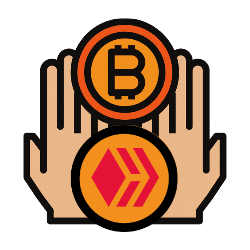Hi there my Hivean friends and followers!
As promised in my post about Zanzibar´s extreme tides that I published here on my blog last week, I´m finally coming with a post that will shed some light on one of the most famous and interesting traditions of Zanzibar and that is the seaweed farming. This tradition is closely related to the extreme tides phenomenon described in the above mentioned post so you might want to check it out before reading this one.
I haven´t really found out how old this tradition of seaweed farming on Zanzibar is but I guess it must be going there for at least decades, possibly even centuries. What I do know though is the fact that Zanzibar, a relatively small Tanzanian archipelago, is currently one of the largest seaweed producers in all Africa and that this industry employs mostly women who make for almost 90% of the people involved in this business.
Let me start out by showing you what these seaweed farms (or seaweed fields if you will) actually look like.
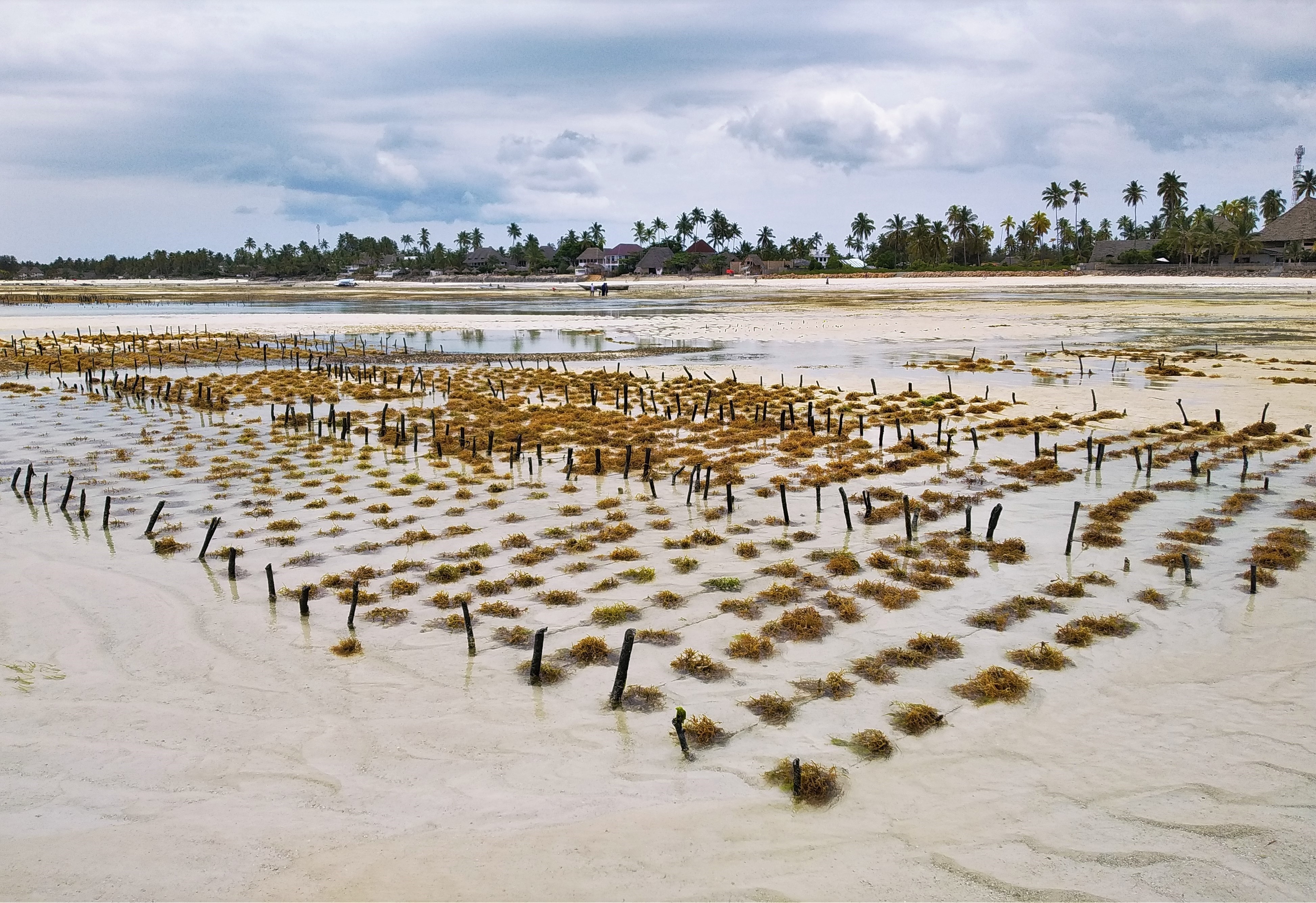
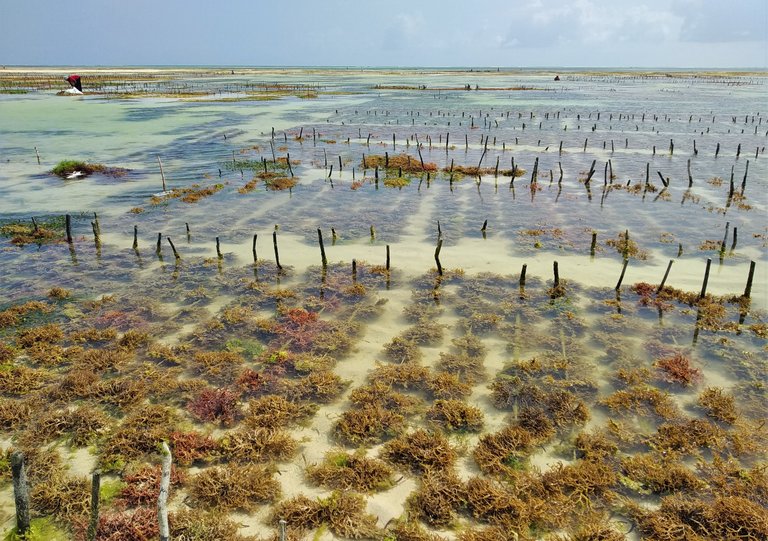
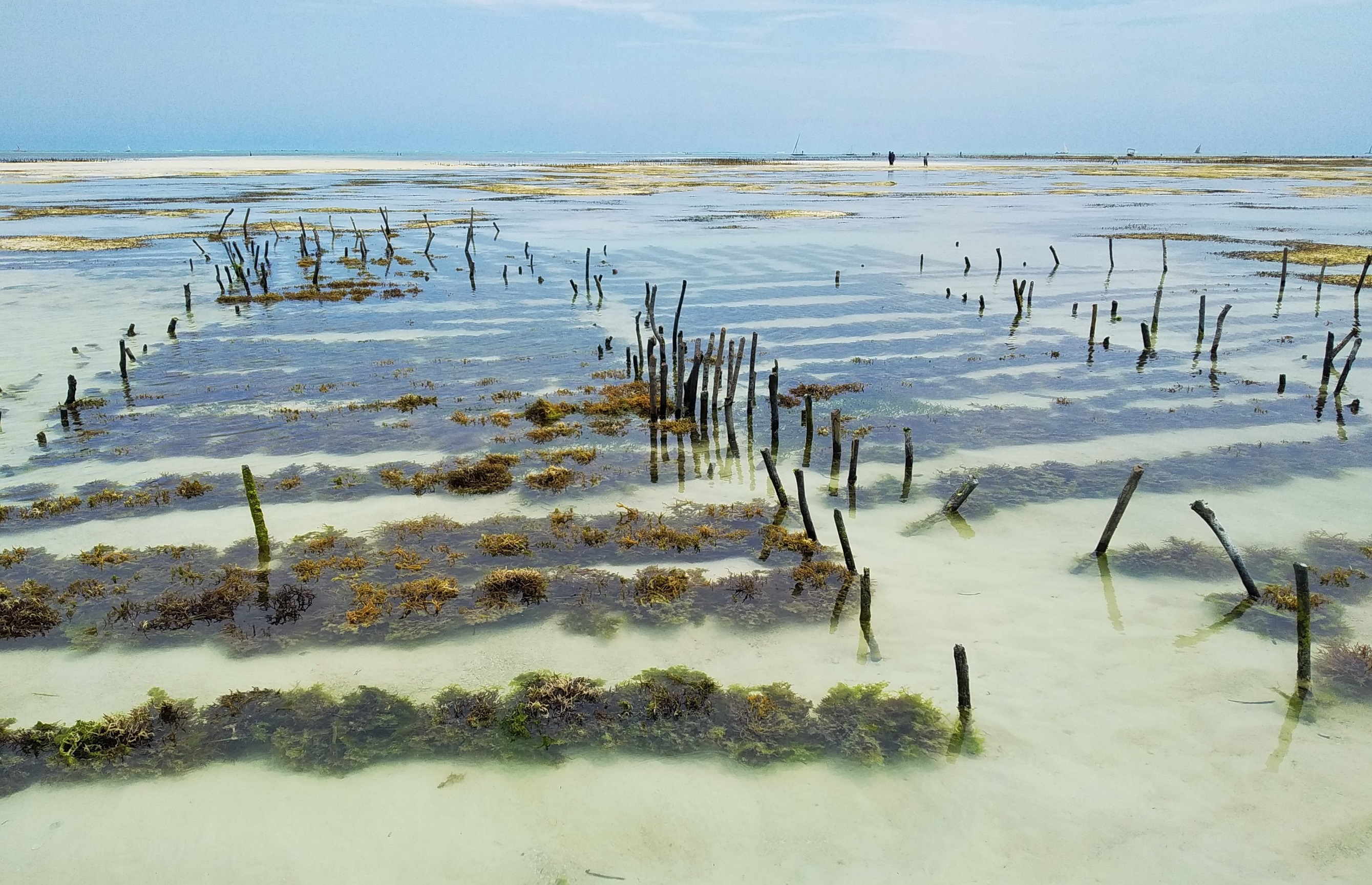
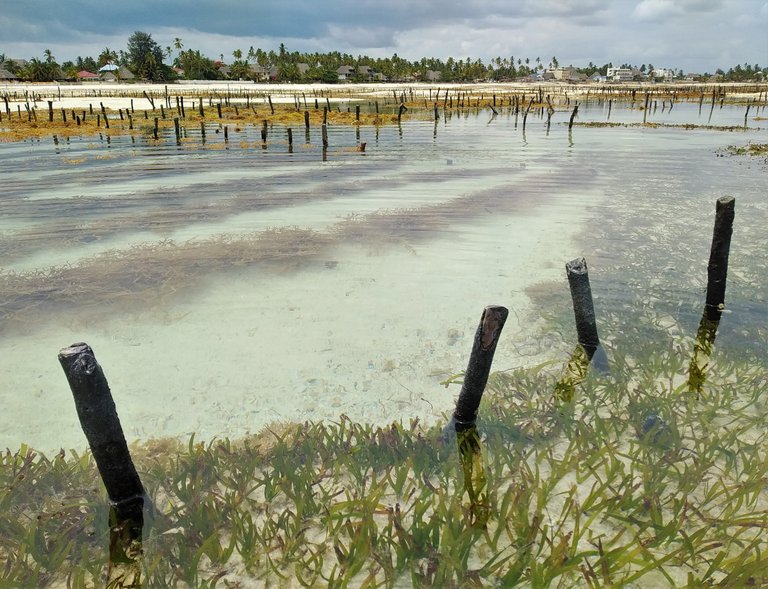
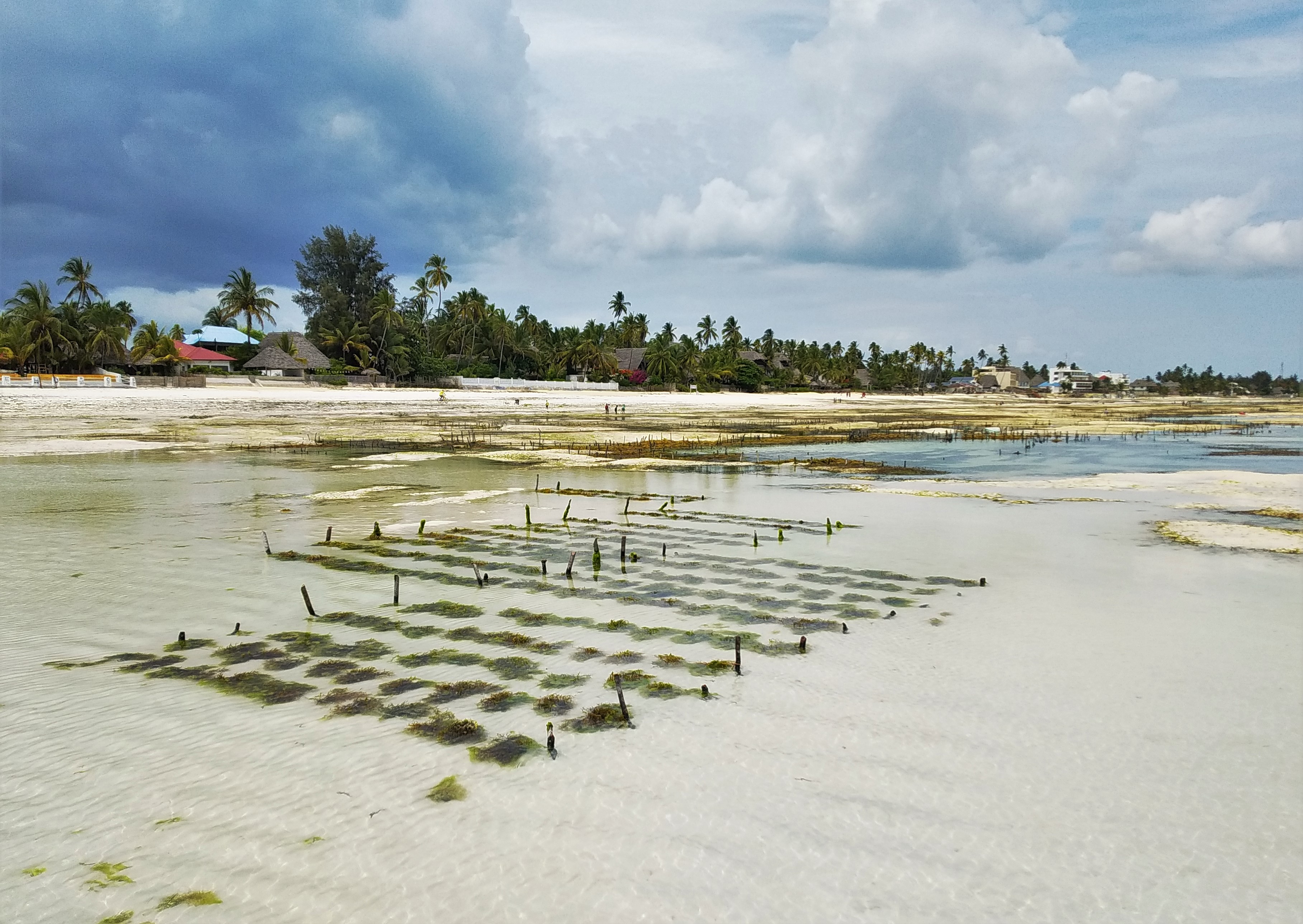
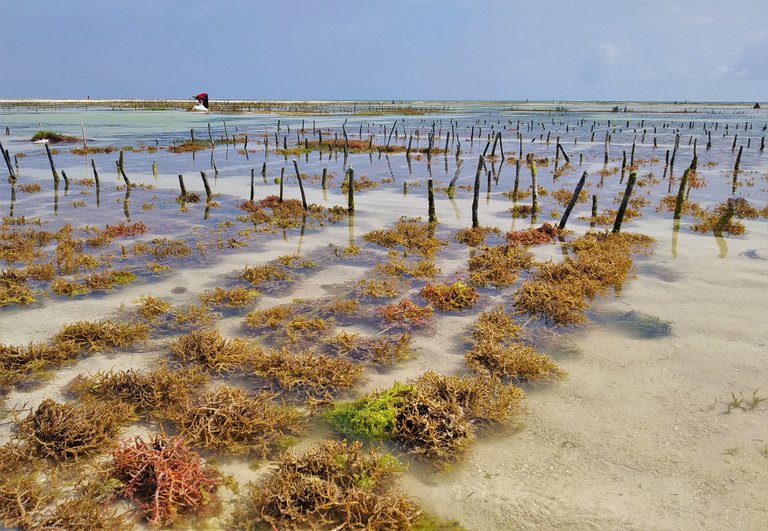

I took all of the above featured photos in the shallow waters just off the beach in the little coastal town of Jambiani in the southeastern part of the Unguja Island of the Zanzibar archipelago. As you probably noticed, it was during the low tide when the pegs are sticking out of the water. I learned that this traditional technique of seaweed farming is actually called "peg and rope" and it´s quite accurate as there are only these two things (pegs and ropes) used to hold and grow the seaweed.
It´s also during the low tide when the (mostly female) pickers come to the farms to harvest the seaweed. I don´t know how fast the seaweed grows but I guess pretty fast because we saw the women doing this job in the shallow waters of the ocean every day.
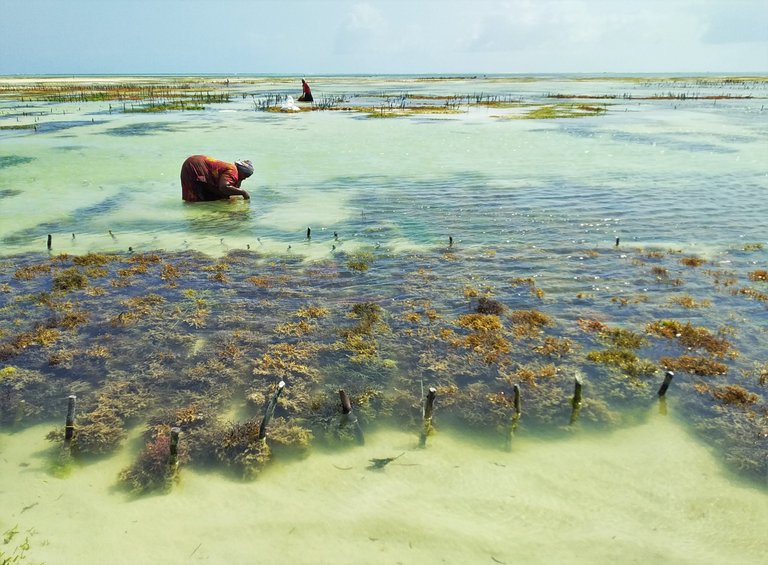
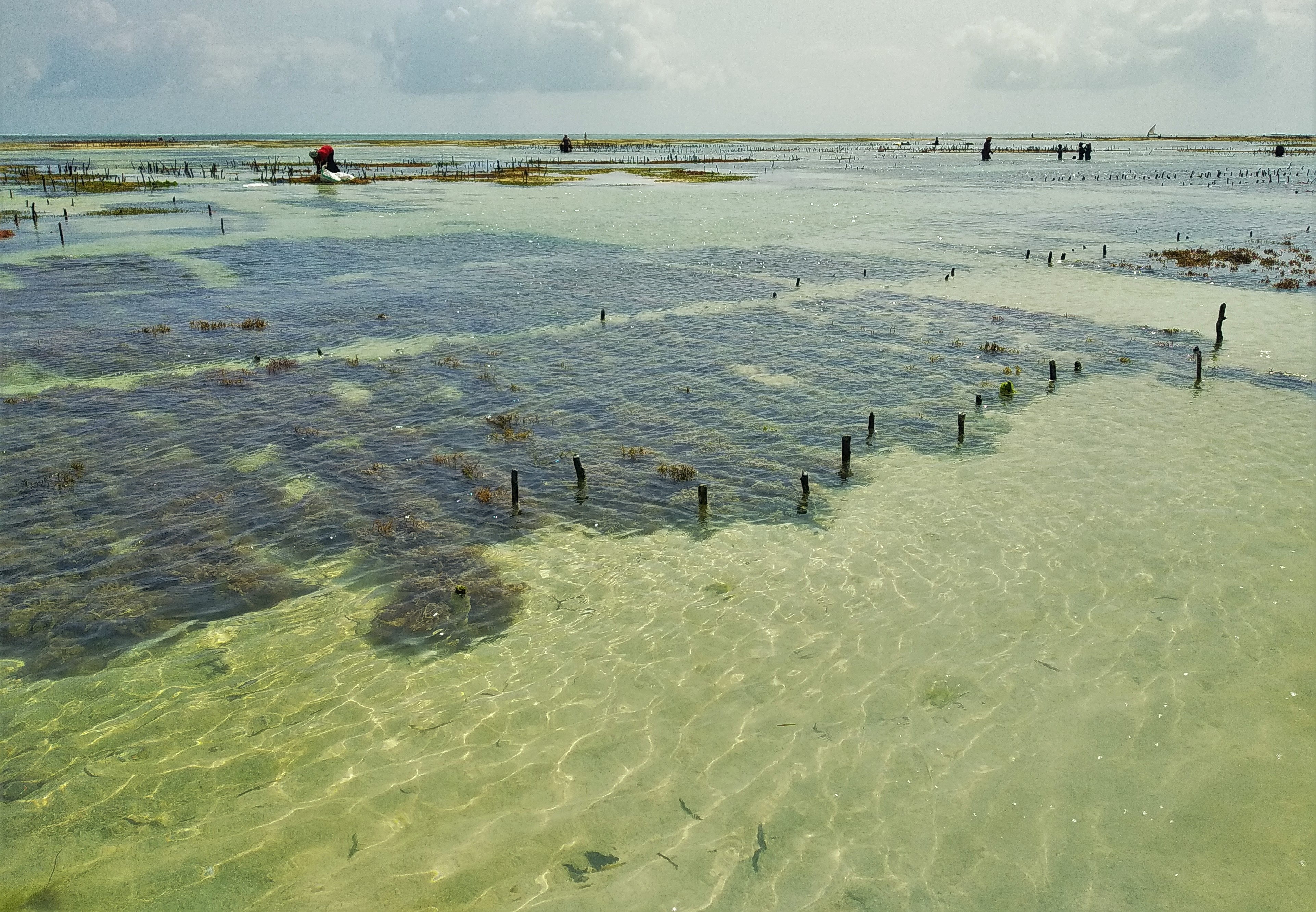

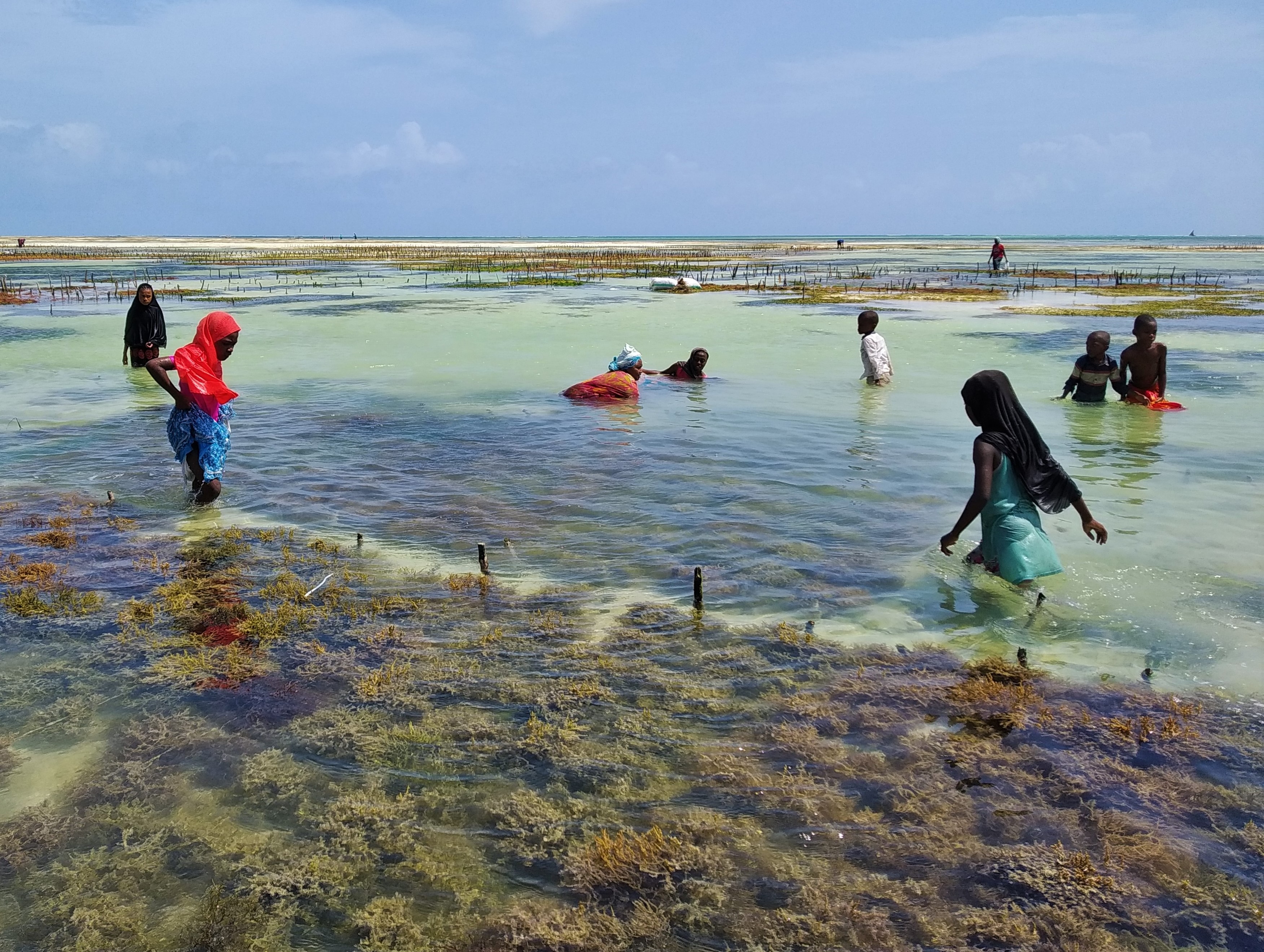
Some farmers even you these little boats to pile up the seaweed before carrying the harvest to the shore to dry.
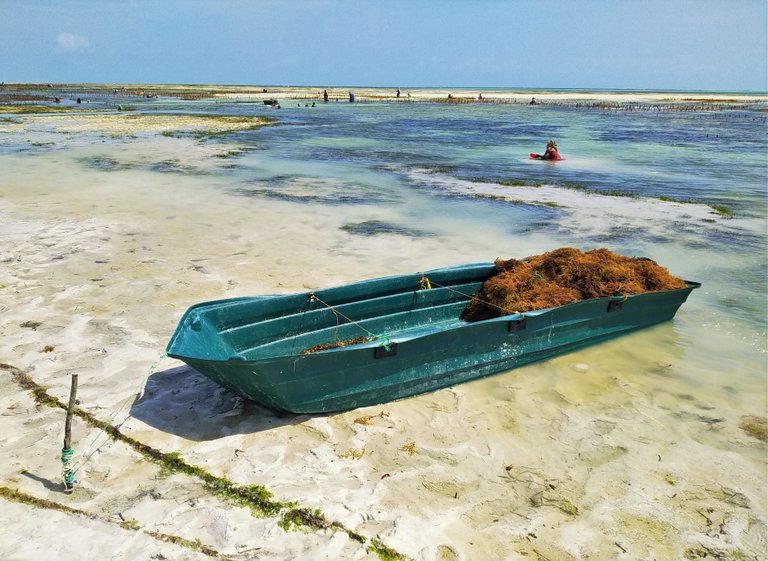
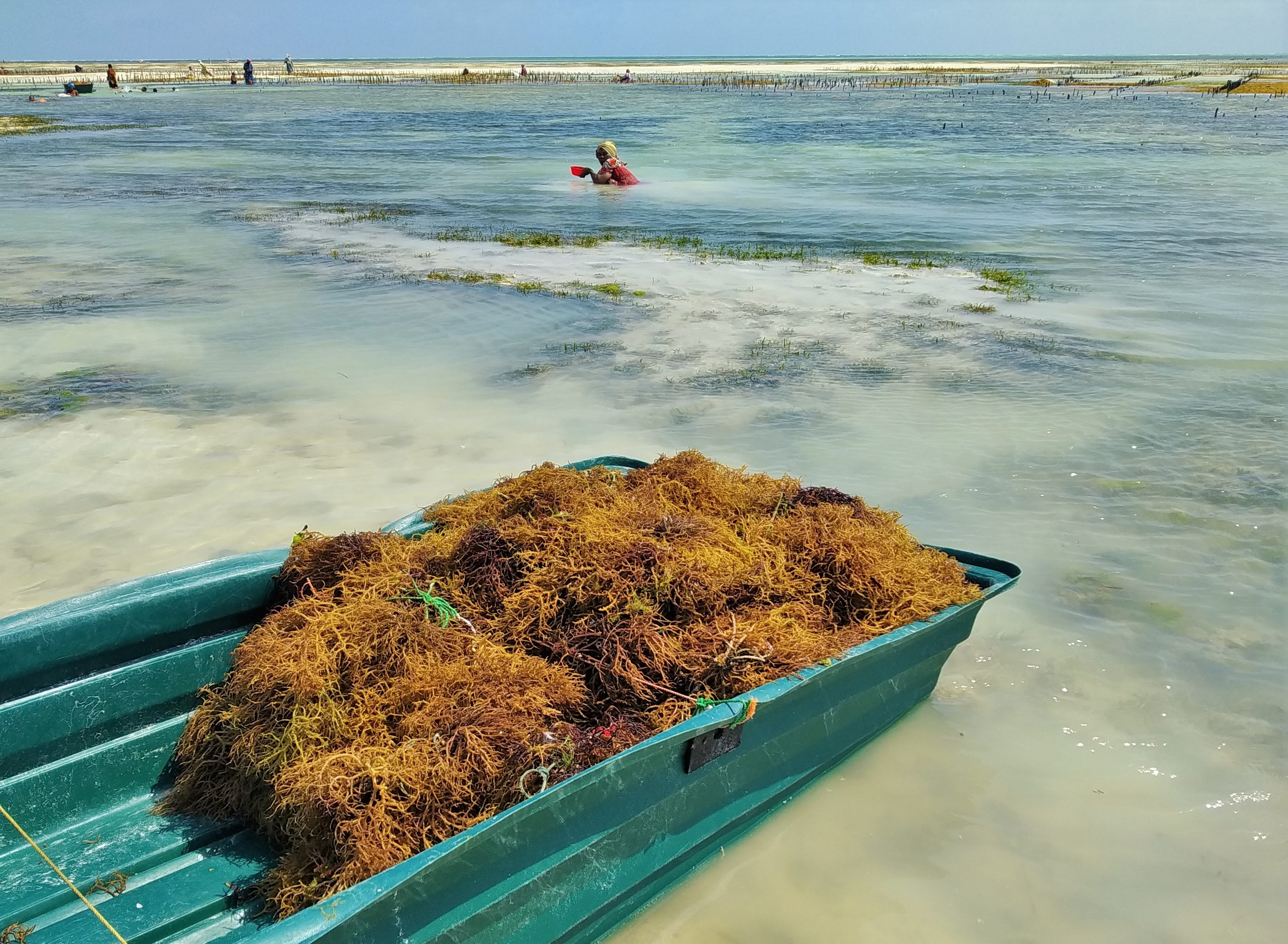
Then, the seaweed is transported to the shore, usually in bags. When I saw the women and even little girls carrying those heavy bags with the wet seaweed, I offered them my hand and they gladly accepted so this is actually me carrying one of the bags :)

These two little princesses first got some candies from us and then I took their bag for them. The smaller one couldn´t be older than some five years of age... Pretty sad sight to be honest.
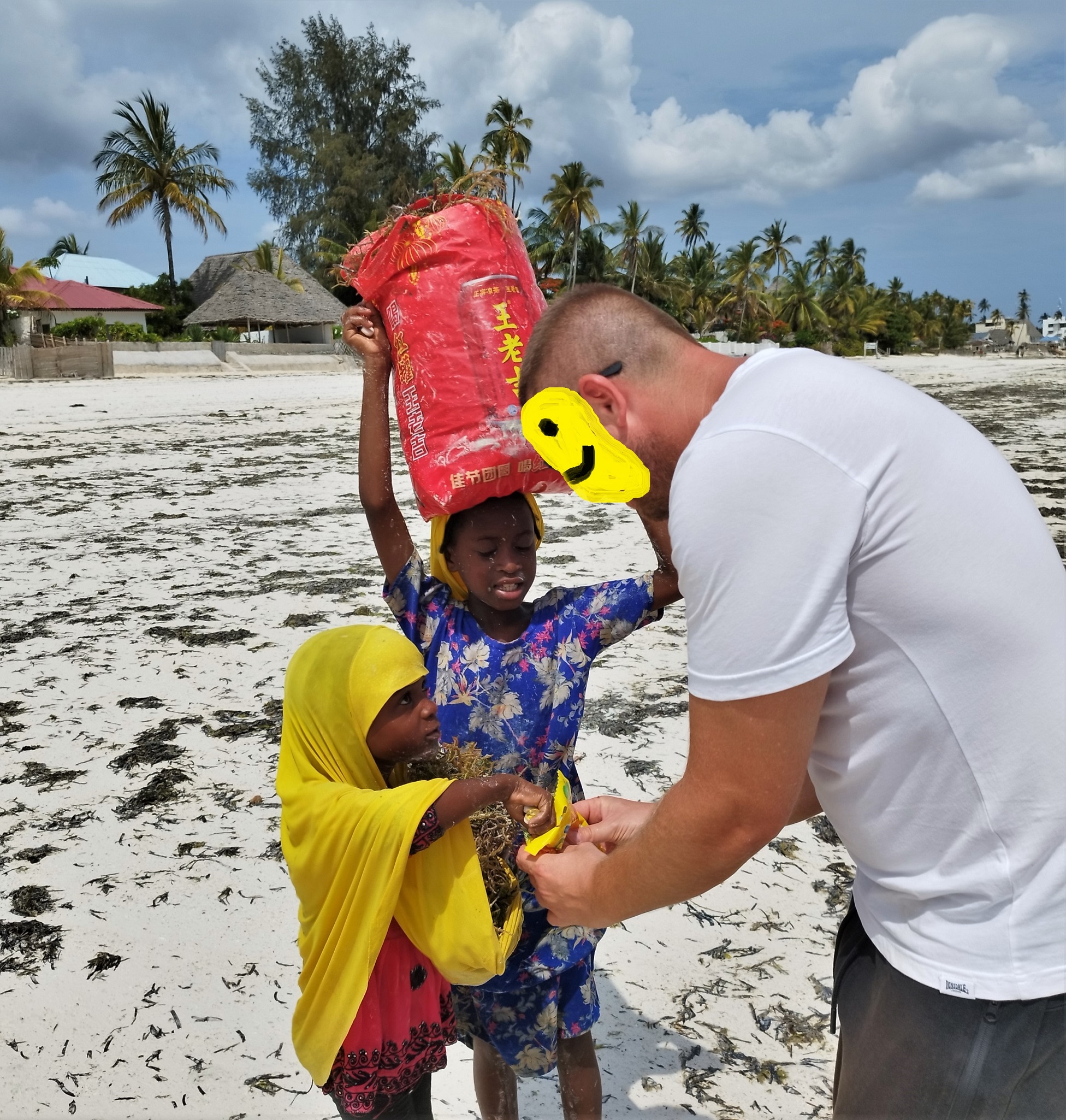
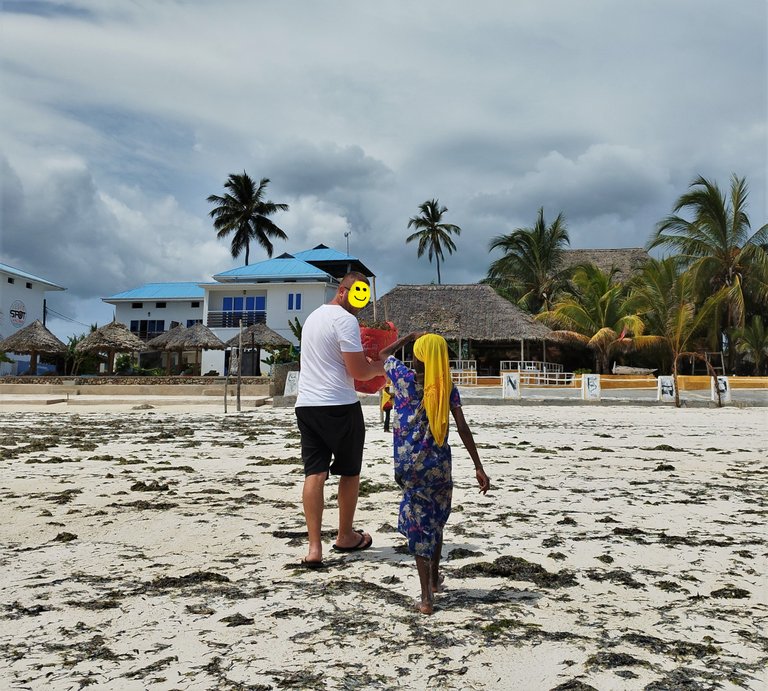
Once on the shore, the seaweed needs to dry. The locals just hang the clusters on the ropes and let them dry in the scorching equatorial sun and fresh ocean breeze.
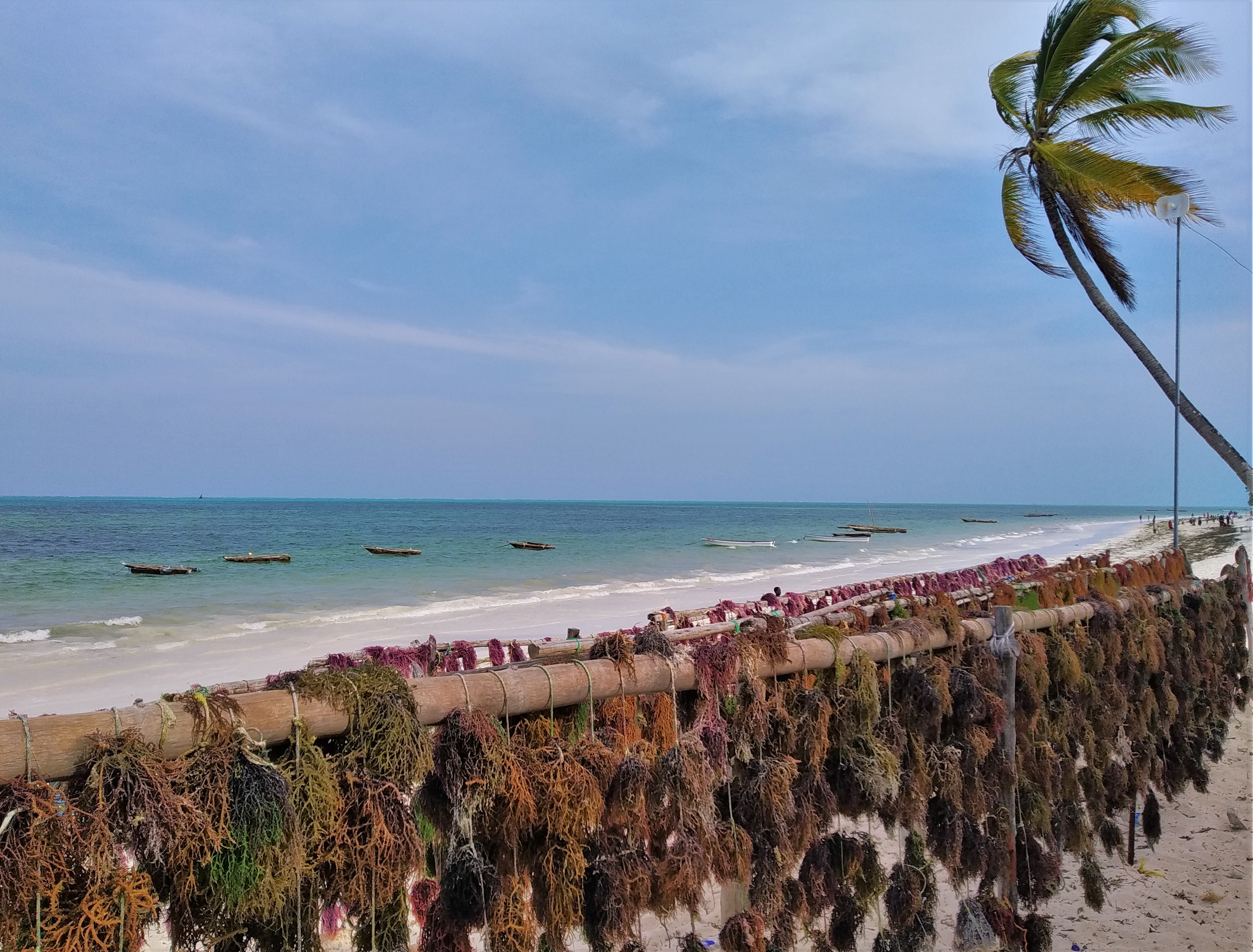
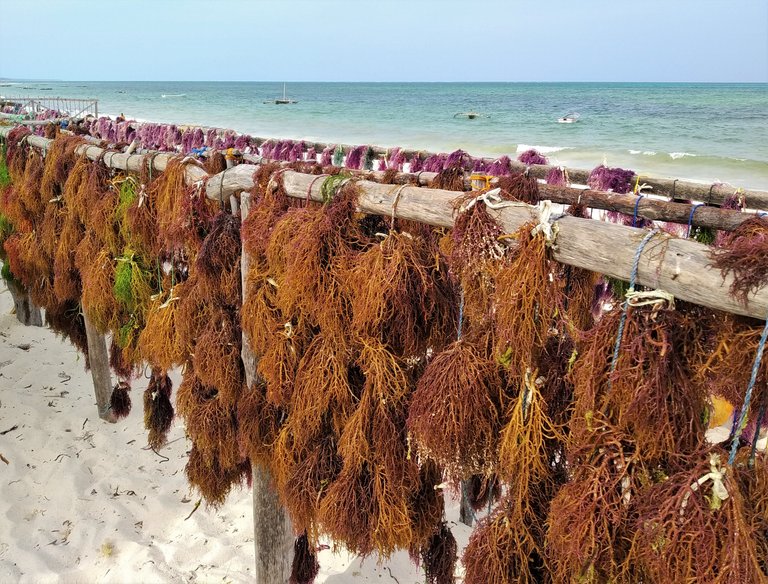
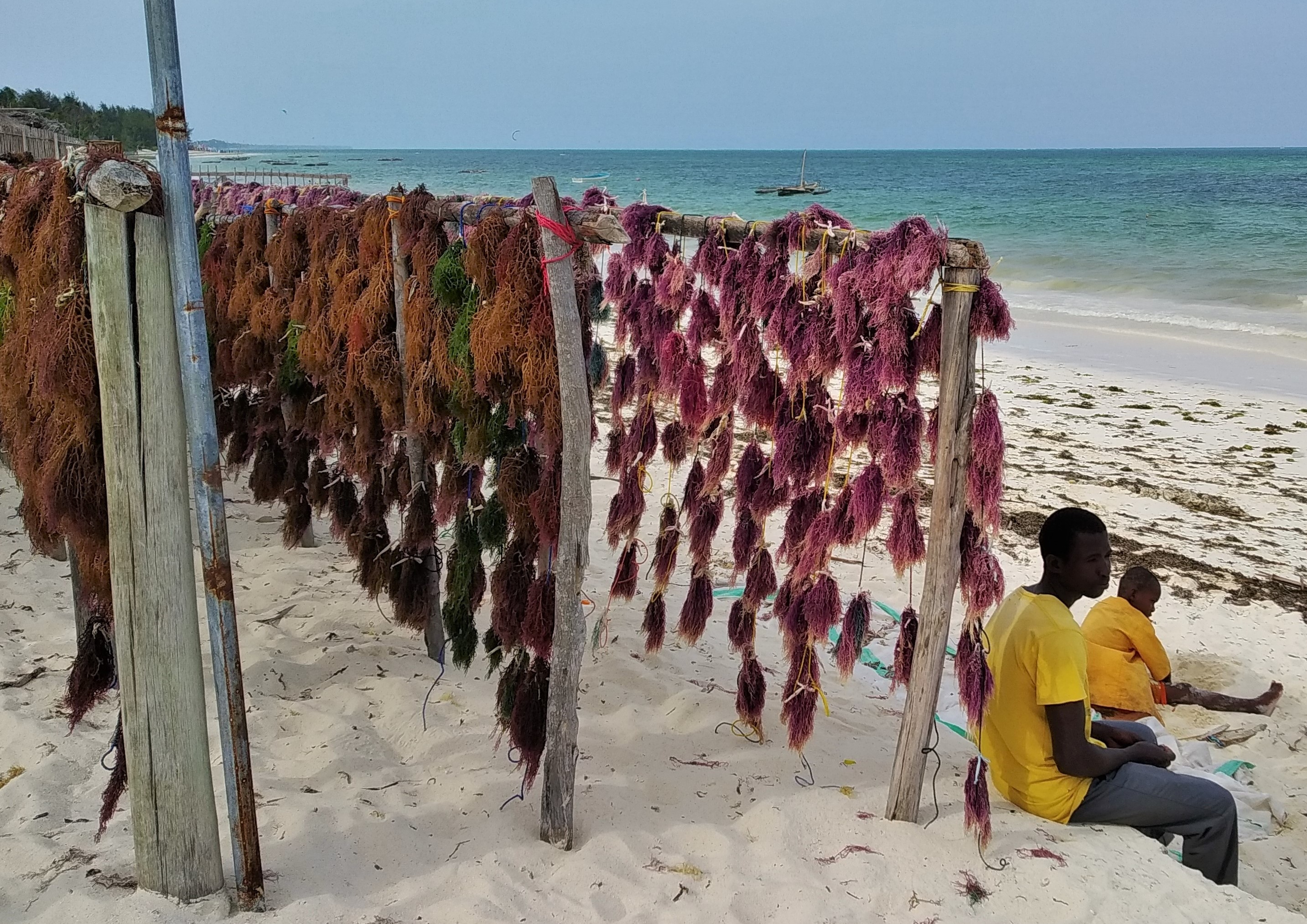
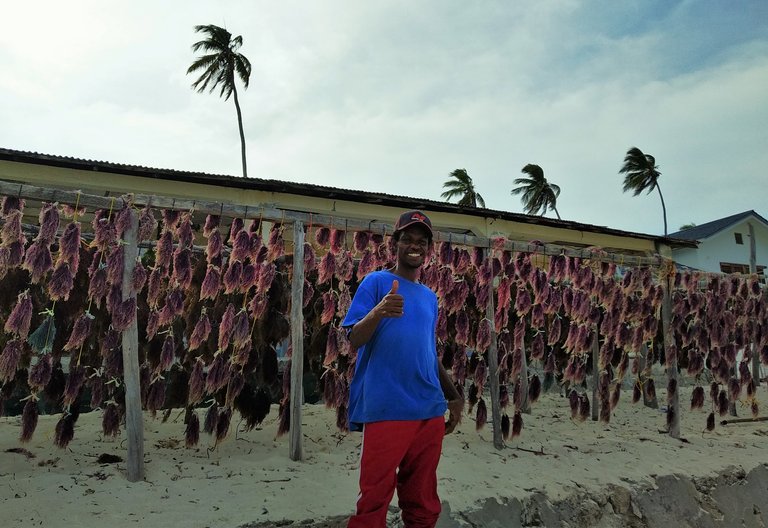
And this is where my photo documentary of the seaweed farming process on Zanzibar comes to an end since I didn´t get to see the next stages of it unfortunately but I think this might actually be it. From what we learned from the locals, most of the dried seaweed is then sold and transported to other countries (mostly China) where it´s further processed and where cosmetic and pharmaceutical products are made from it. But some of the dried seaweed must be processed on Zanzibar too because we saw some souvenirs (for examples soaps) made from the locally grown and harvested seaweed.
The seaweed farming is a really interesting tradition and a form of aquaculture that we haven´t seen anywhere else yet. I think that Zanzibar is a great place for this practice because of the extreme tides that allow the locals to grow and harvest the seaweed even far into the ocean, far away from the beaches. The tradition may look simple and easy to keep but it definitely includes some hard work too and honestly, I don´t know why the local men don´t help their women with carrying the heavy bags. As one old Czech saying goes: "Different regions, different manners."
Thanks for your attention guys, I hope you learned something new from this post. More stuff from this amazing Tanzanian archipelago called Zanzibar coming soon so stay tuned. Until then... Hakuna Matata! :)
This post was created by me for the Hive blockchain exclusively. All rights reserved.






